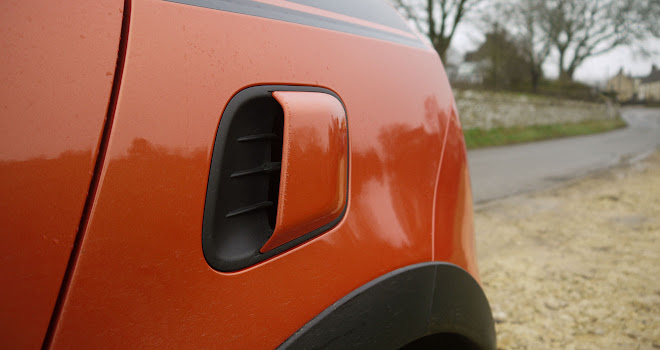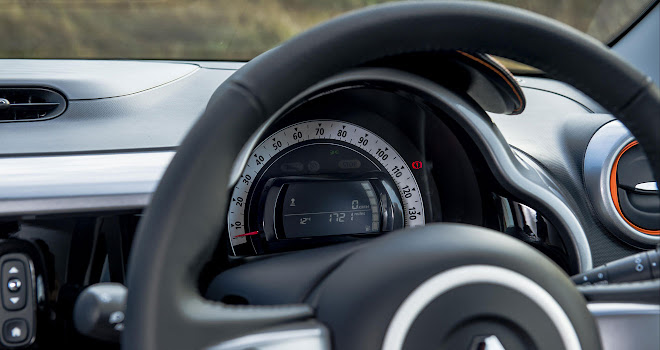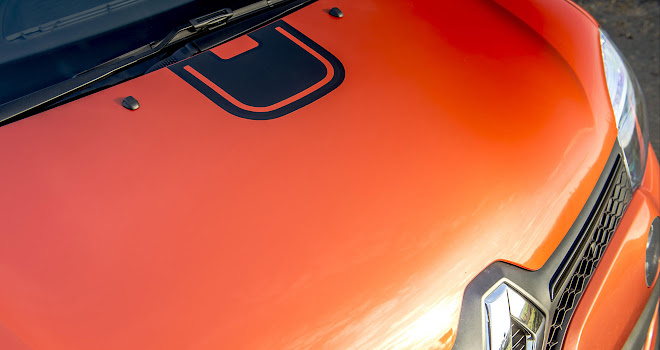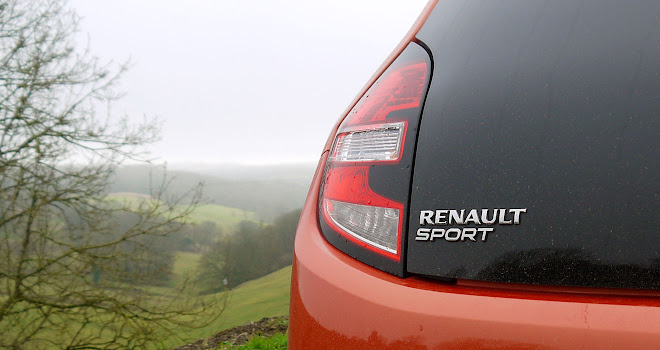
Rating: stars
Good: zippy engine, cheeky good looks
Bad: small boot, needs a rev counter
Price: from £14,085
There are those who’ll tell you that the Volkswagen Up is the best small car you can buy. I can see their point – it’s very neatly designed and bolted together to Germanic standards (in Slovakia) and clings onto residual value like a monkey to its mother. But in other respects it’s about as enticing as a bowl of porridge. Wholesome, sensible, but severely lacking in spice.
That will probably change early next year when VW launches an Up GTI but for now I’d much rather drive a Renault Twingo. You’ll smile just looking at it. After spending a week with an entry-level model a while ago I really didn’t want to give it back.
Now, a year ahead of the Up GTI, there’s a more lively version of the Twingo to consider. Tweaked by Renault Sport engineers, the Twingo GT is the most powerful model in the range, providing up to 110bhp from its little 898cc three-cylinder turbo petrol engine. And with standard stop-start technology it still manages to score a reasonable 115g/km in CO2 terms.

The GT is also, sadly, the heaviest Twingo you can buy. At just over a tonne the Twingo GT is a disappointing 137kg more lardy than the lightest in the line-up. To put that in context, 140kg is twice the weight of the average British woman.
I’m not sure where the two ladies are hiding but if they’d get out the Twingo GT might feel a little more athletic. A 9.6-second dash to 62mph is pretty quick for a city car but not good enough to keep up with some competitors. An Abarth version of Fiat’s 500, for example, takes 7.9 seconds.

Away from paper comparisons the Twingo GT feels entertainingly brisk, with an engine that seems extremely eager to rev. Oddly, the extras added by the Renault Sport team didn’t include a rev counter, so you will need to keep your ears open as you shift through the five ratios in the slightly stiff manual box.
Renault has given the GT electronically variable steering, which can add a little extra twist to the steering column so that, for example, a quarter turn at high road speeds moves the front wheels by a smaller amount than the same quarter turn applied at lower speeds. This arrangement sounds unnerving but is intended to offer quicker steering for twisty roads combined with a more stable wheel on motorways.
It evidently works because the steering never feels peculiar or unpredictable, while the Twingo always seems keen to turn into corners despite lacking the weight of an engine over the front wheels.

The Twingo is, of course, unusual among modern hatchbacks by putting both the driven wheels and the engine at the back. The boot carpet is backed by an inch-thick layer of insulating foam, below which you’ll find a painted steel cover, bolted shut. The engine is under that, tilted back at an angle and fitting roughly within the circumference of the rear wheels.
One of the changes made to the GT edition is the addition of an intake scoop, on the nearside rear wing, to help the more powerful engine with its breathing.

The car also sits 2cm lower than an ordinary Twingo and has a stiffer rear anti-roll bar. Those changes combine to provide a more planted feel, though the GT is thankfully not bone-jarring over bumps. It’s rather that the standard Twingo is on the soft and pillowy side.
Eye-catching 17-inch alloy wheels add quite a big dash of attitude to the GT. They come shod with tailor made Yokohama BluEarth tyres – surprisingly that’s an eco-biased, low rolling resistance brand rather than a grippy, sporty variety of rubber.
Noticeably wider at the rear, the tyres provide more grip at the back than at the front of the car, helping to ensure that the GT’s tail never gets a chance to wag the dog. A safety conscious ESP system will also step in promptly to ensure that the Twingo behaves more like a front-drive hatchback than a rear-drive sports car if you overdo things in the corners.

On days when pace is less of an issue, you can follow the gearshift hints that pop up on the digital inner section of the instrument panel, or even hit the Eco button lurking by the gearstick to dial back the GT’s eager throttle response.
The GT edition starts at £14,085 and comes reasonably well equipped, as you’d expect of a car at the top of its range. It shares its striped, part-leather upholstery with the less powerful Dynamique S trim level. The GT also offers the same range of exterior colour options – including the arresting metallic orange pictured, which costs £625 over the standard white finish. Metallic black or grey paint costs £495.

Roof stripes are a £200 option, including an odd little squiggle on the bonnet. And spend £65 on the premium delivery pack and you’ll find cheeky little Twingos stitched into the carpet mats, which I think I like more than the stripes. I could also be tempted by the £850 electric canvas roof option, which suits the character of the car.
Overall, the Twingo GT is an entertaining small car offering a fair bit of pep, even if it’s not really hot-hatch quick.
It looks good and thankfully the bigger wheels and stiffer suspension haven’t removed all softness from the car’s ride. Just like the cheaper, less powerful versions of the Twingo, the GT is an appealing little car that should put a smile on anyone’s face.




